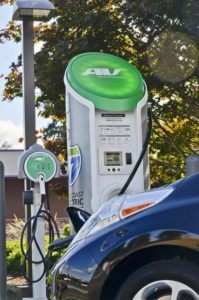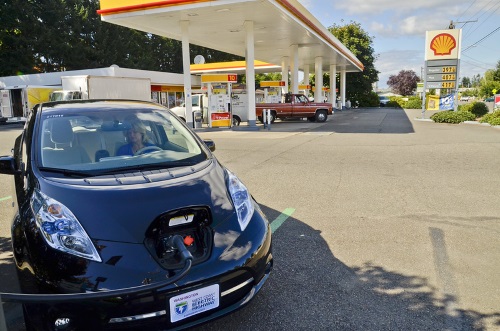Washington state has zipped beyond its goal of having 50,000 plug-in electric vehicles (EVs) registered by 2020, thanks in part to the Washington State Department of Transportation, which plays a leading role in developing EV infrastructure and encouraging EV ownership.
By the end of 2019, drivers in Washington had registered 53,307 plug-in EVs, representing a 24 percent year-to-year increase and a 222 percent increase in just four years. The number of publicly available charging ports also has increased since 2015, from 949 to nearly 3,000 at the end of 2019, according to the WSDOT Gray Notebook.
WSDOT was an early advocate of EVs and developed “the first and most robust highway corridor in the nation in 2012 for electric vehicle charging,” explained Tonia Buell, the agency’s project development manager.

More recently, the department created the Zero Emission Vehicle Infrastructure Partnerships Program or “ZEVIPP” for short, which provides about $1 million a year in grants to non-profit organizations, government entities, transit agencies and tribes to build charging locations near highways exits along major routes in Washington. Grant recipients must have public and private-sector partners, and because the grant covers only part of the project cost, the partners usually provide the remaining financing, Buell said.
Funding for ZEVIPP comes from a $75 annual state registration fee for plug-in electric and hybrid vehicles. Part of that fee also supports sales tax incentives to grow EV ownership, which makes building charging infrastructure a better investment for private companies. The parallel funding to promote EV ownership and EV infrastructure development is critical because each element relies on the other, she noted.
“People want to know they’re able to charge their vehicle whenever they need it, so to have that growth in EV ownership, you have to develop the charging infrastructure,” Buell emphasized.
WSDOT practices what it preaches, having replaced 23 percent of its gas and diesel passenger vehicles with EVs. Washington Governor Jay Inslee (D) has taken it a step further, ordering all state agencies to purchase EVs instead of internal combustion engine vehicles if the EV option is available.
Having top-level buy-in and leadership is “a very critical component to making this work” for any state DOT that wants to develop a strong EV program, Buell explained. Governments will have to make an investment in promoting EV ownership and developing the infrastructure, at least until EVs become more ubiquitous. “I think the tipping point will be when EVs are around 15 percent of all vehicles; right now, we’re at about 1 percent,” she said. “That’s going to happen when the purchase price of the EVs is equivalent to internal combustion engine vehicles, and we won’t need the purchase incentives.”

